JVx and JavaFX (fasten your seat belts)
Today is a great day, because I'm able to write about our latest Research Project.
It has to do with JavaFX and JVx - what else.
If you remember one of my blog postings in 2013, you know that we tried to implement our JVx UI with JavaFX. Long story, short: Not possible with one master thesis.
But... we always try to reach our goals and it's an honor to tell you that we're back on the track.
It's cool because of JavaFX. It's APIs are still not perfect and the overall performance could be better but it has so many awesome things. Two of them are styling via CSS and animations. JavaFX is the official replacement for Swing and it has potential to bring back "write once run anywhere". We don't know if JavaFX will be the holy grail for desktop application development but there's nothing comparable in the Java world.
To be honest, it's not a problem for us because our JVx is (UI) technology independent and if JavaFX won't do it, we'll implement the next UI toolkit for JVx.
... but back to the topic
You should already know that JVx is a Full-stack application framework for building database (ERP) software. It's GUI technology independent and we've different UI implementations. The most important ones are based on Swing and vaadin. We also have native Android and iOS support and our applications run on embedded devices as well. Our applications don't need an application server to work properly because we have a plain socket server as well (IoT ready).
Our preferred Java UI technology was and is still Swing, because it's feature rich and you can build every kind of application without bigger problems. The problem with swing is that it's old and not maintained from Oracle. Sure it will work with future Java releases without bigger problems (hopefully) but you can't use modern development techniques or create fancy and fresh UIs with less effort. A standard Swing application looks boring and cold. Sure, it's possible to pimp a swing application with lots of pictures or nice looking LaFs, but it's not fun.
Swing development is like software development in the stone-age, compared to state-of-the-art web development. If you do web development, you have CSS3 and HTML5 and some nice designed UI frameworks. I won't say that you're faster or that web development is better but it's easier to build nice looking UIs. I'm not a big fan of classical web development because most applications are horrible to maintain, there are soo many different frameworks and you can't be sure that your investment is future-proof because many frameworks don't survive the first year. But everything depends on knowledge and the right framework - for sure.
IMO it's better to use one framework that solves most of application relevant problems - if it exists. If we talk about web applications, I recommend vaadin because it's feature rich, just works, is very polished and is licensed under Apache 2.0. The community is active and great support is available!
Sure, there are some other frameworks like GXT or extJS from Sencha, but the license could be a problem if you build commercial applications. Don't forget RAP, but it's not trivial to start with the whole Eclipse ecosystem.
I'm talking about (enterprise) application development and not about webpage or webservice development. I would recommend pure HTML5 and CSS3 with one or two smaller javascript libs for developing fancy "webpages", or php instead of Java. If Java and "webpages", PrimeFaces is a good decision.
Soo, if Swing is "dead" and web development is hard, what should we use for (enterprise) application development?
If you develop for the desktop, try to start with JavaFX becasue it's maintained and has potential for mobile devices.
If you develop web applications, use vaadin.
And why should you use JVx?
JVx bundles all together in one independent framework (it's still small and easy to learn). You'll be independent of the underlying UI technology. Write your application once and start it with different UI technologies or use it on different devices without problems. Your investment is future-proof. JVx is open source and licensed under Apache 2.0. JVx doesn't hide the underlying technology. It's always possible to use features from the technology if you want. If you use a UI without abstraction, you can't switch to another UI easily without rewriting most parts of the UI. If you start with e.g. JavaFX and if Oracle will abandon JavaFX, will you rewrite the application?
You can compare the concept of JVx with SLF4J, but with a different use-case: (enterprise) application development
And what about JavaFX?
I like JavaFX because of, IMO, 5 great things: scene graph, CSS styling, Animations, Web engine and the community. All other things are important and useful but not essential for real-world applications (vs. Swing). It's not possible to compare Swing with JavaFX because JavaFX was written from scratch and Swing was based on AWT. Sure, both toolkits are UI toolkits ![]() but with different concepts.
but with different concepts.
JavaFX bridges the gap between desktop and web development. It's still a toolkit for desktop applications but with most advantages of web development. It's possible to create fancy applications without headache. There are cool tools like Scene Builder or ScenicView. IDE support is getting better and developing controls is not too hard.
Sounds too good? JavaFX is on the right track and ready for real-world applications.
That was enough for us to start a JavaFX UI for JVx. It's the only framework which allows switching between Swing, Web, JavaFX or native mobile. Sounds unbelievable? Here's is our first video with our JavaFX implementation. It demonstrates the full power of JVx and JavaFX.
The video starts with our good old Swing UI. The same application will be shown as web application in a Chrome browser. And finally it will run as JavaFX application. You should carefully check the JavaFX application because it has an embedded browser that shows the same application, with a different UI technology - at the same time. Don't miss the animations ![]()
JVx and JavaFX
We know that the styling is not really cool but we're currently in the development phase and aren't finished... be tolerant

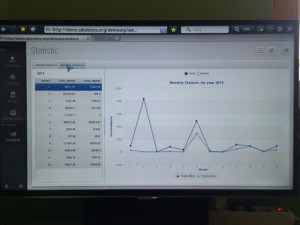
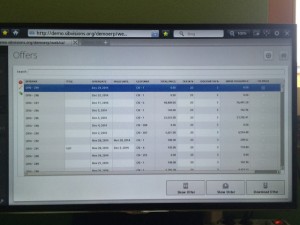
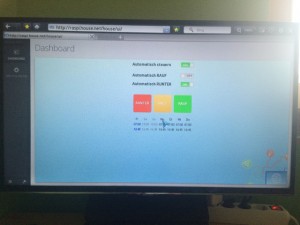
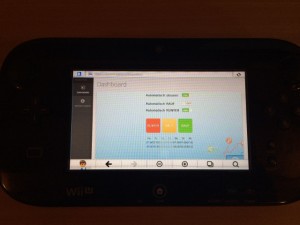
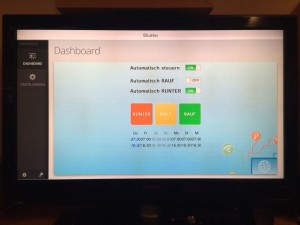
 RSS-Feed
RSS-Feed